8+ SAMPLE Brand Management Report
-
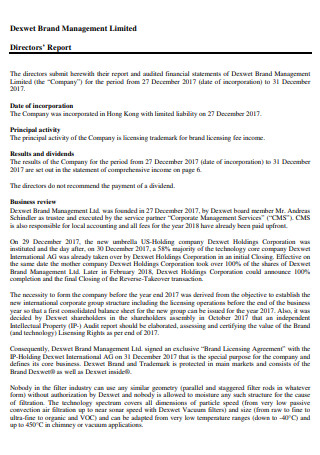
Brand Management Director Report
download now -
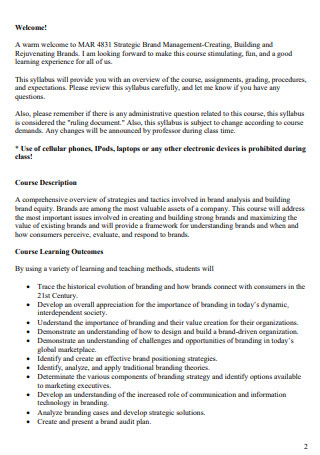
Strategic Brand Management Report
download now -
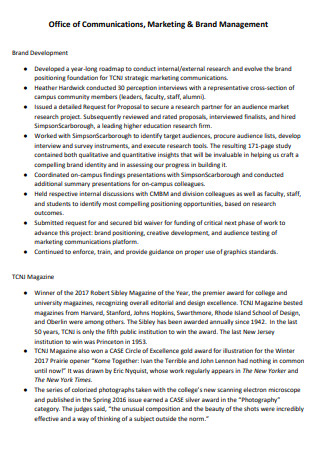
Marketing Brand Management Annual Report
download now -
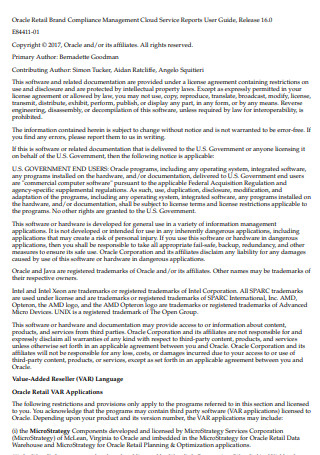
Retail Brand Compliance Management Report
download now -
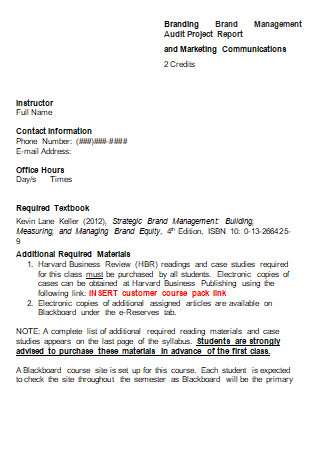
Brand Management Audit Project Report
download now -
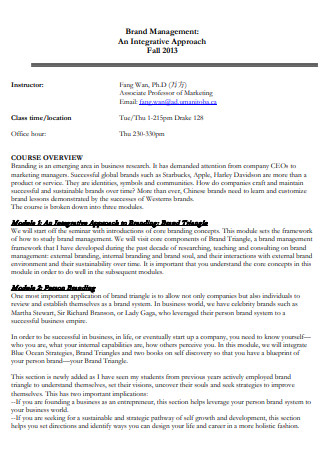
Brand Management Progress Report
download now -
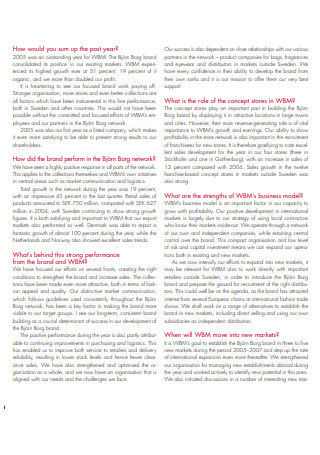
Brand Management Annual Report
download now -
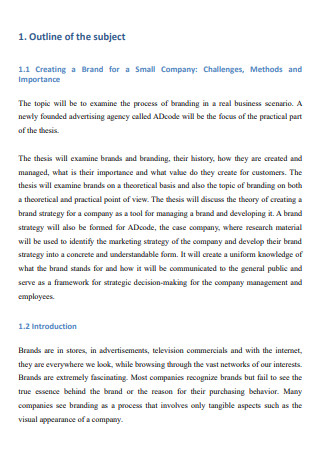
Brand Management Branding Report
download now -
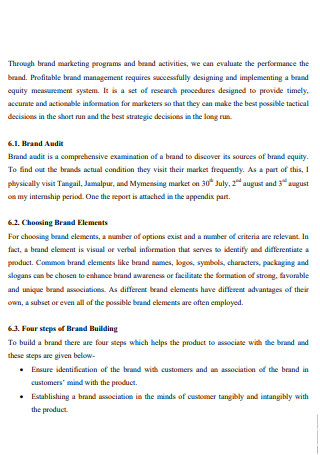
Brand Management Internship Report
download now
What is a Brand Management Report?
A brand management report is a useful document that comprises brand management goals, objectives, and methods or strategies designed to carefully monitor, manage and calculate the brand equity and brand strength which will improve the overall brand awareness, value, and relevant differentiation. It also creates an emotional connection and accessibility while accelerating the plan of a brand and evaluating the improvement compared to the brand plan.
In order to make your customers appreciate your brand, you need to apply and facilitate brand consistency by ensuring that your brand values, image, and messaging is consistent across all channels. A 2019 report revealed by Lucidpress that consistent presentation of a brand has seen to increase revenue by 33%. Maintaining a consistent brand image makes it more convenient for the customers to remember your business or associate with your brand.
Thus, keeping a strong and unique brand will not only increase your chances of getting new customers, but also boost employee motivation and provide your business with a systematic direction. One way to build a strong image is humanizing your brand, thinking of your brand as something your customers can relate to. So, creating an effective report in brand management for businesses and organizations is helpful in facilitating consistency, transparency, originality, and authenticity in your overall brand in your business.
Different Types of Brand Management Reports
Branding, communication channels, product development, online and offline promotions, and market research are some of the major tasks of professional brand managers. They are the ones who are responsible for overseeing the whole creative process of brands. Some of the tasks they perform are gathering important brand sales data, developing custom brand management campaigns for products, contributing to the design of retail packaging, creating in-store marketing displays, communicating with vendors and distributors to acquire insights on how product design can be enhanced and more. One of the things they need to accomplish is submitting the latest brand management reports on a monthly basis. In this section, you will know and understand more about the different types of brand management reports. Read the following details below:
1. Brand Management Director Report
Do you need to create a brand management director report? A brand management director report is a well-structured document that provides an all-inclusive record of the brand management work by a brand director. It is made up of fundamental information explaining the overall brand exposure performance and status on a specific period of time. A brand marketing director is a highly collaborative position as he or she partners with the sales department for the purpose of creating brand demand and marketing plans. By focusing on communication services and media relations, digital and new media, coordination of marketing activities, creative and design services, advertising, brand and trademark management, the director along with his or her team are capable of achieving greater synergies. Using this report will help the director and other marketing professionals in the business to be well-informed on the latest performance of their company’s brand and image, as well as their products and services, and elevate their brand strategies to be able to drive more awareness, acquisition and retention.
2. Strategic Brand Management Report
A competent brand manager is a person who has a clear understanding of the importance of strategic communication and has the right skills to execute on the strategy of the brand. This means the brand manager should be able to facilitate the process of managing internal and external brand activities in a strategic manner or simply, strategic brand management to ultimately grow the brand reputation and equity. A well-detailed report of strategic brand management is important in positioning strategy and competitive advantage, and maintaining the brand personality, tone of voice, brand identity and presence. It includes descriptions and explanations regarding several strategies and techniques for analyzing and planning how the brand should be perceived in the market. The branding strategies are beneficial for the brand’s growth and the frequent updating of the strategy. Doing this will guide the company to incorporate notable value to its products and services.
3. Brand Environment Audit Report
The book Brand Management: A Theoretical and Practical Approach by Saurabh Aggarwal explained that one of the primary steps in brand management is conducting a successful brand environment audit. At the research stage, the brand team will discover the raw material for the brand promise through matching company strengths with what customers value. The quality of the results of the revealed brand is dependent on the quality of research. Who is buying your products? Why are they buying them? What do customers think of competitors? How are customers solving the problem without your products? What do customers want from the product but aren’t getting? What category do customers put your products in? What is your brand personality? What do customers associate with you? These are some research questions that need to be considered based on the external perspective.
What are the company’s primary differentiator’s benefits? Where do you lead the market? Where would you like to lead? What is the company’s self-image? These questions are essential in revealing the internal perspective or displaying the company strengths and weaknesses, values and landmines, visions and realities. Writing a formal brand environment audit report for your business is fundamental as it contains crucial information in defining what you want to get out of the research like the percentages of responses for a question or picture of the overall responses. Thus, the brand environment report is designed to provide all the details to define the common ground between company strengths and what customers value, and to help the company understand what is promising. If you are writing a brand environment report, summarize the outcomes of your internal audit and qualitative or quantitative external research, and organize the outcomes by general area such as strengths, personality traits, or associations. After that, develop conclusions and recommendations according to this information.
4. Retail Brand Compliance Management Report
Brand compliance is crucial when it comes to providing a much extensive range of monitoring, taking less time, and costing less than manual MAP compliance efforts. Manufacturers are able to put guarantee on brands that they are being showcased properly without doubling the size of their compliance team. There are different components of brand compliance which are MAP compliance, promotional compliance, and assortment compliance. MAP compliance is the record of prices and violations over time. Promotional compliance indicates screenshots of homepages, emails, product pages, and social media. Assortment compliance is a record of every product offered by each retailer over time and management of product availability and new product introductions. Creating a retail brand compliance management report will guide in developing reasonable decisions about retailers getting the best deal possible from their suppliers without fighting an unfair advantage. This is useful in allowing manufacturers to monitor multiple sources which include text, visuals, and product assortment plus monitoring price.
5. Brand Management Progress Report
Jonah Sachs said: “Your brand is a story unfolding across all customer touch points.” Based on Brand Management: Text and Cases, strong brands draw their strength from customer franchises as they enjoy the fierce loyalty and willingness of the customers to pay for their premium products and services. No brand can ever claim to be powerful or strong in the absence of command over the hearts and minds of its target customers. The general thread that runs across successful brands is their evolution from technical excellence to emotional or symbolic excellence. For a brand to move on a strong brand trajectory, a strong brand should have an excellent product capable of delivering superior functional satisfaction. That’s why product functionality or performance should be complemented with customer psychological satisfactions. In order to promote significant progress in brand management, brands should turn to the emotional side of the customer to develop bonding. While writing a brand management progress report, indicate the noticeable aspects of the brand growth and its effect on the customers.
6. Brand Management Equity Report
One way to establish a successful brand equity management system is through assembling the results of the tracking survey and other significant performance measures for the brand into a brand management equity report that will be distributed to management on a regular basis. This type of report attempts to effectively integrate all these different measures and it should provide descriptive information as to what is happening with a brand and diagnostic information as to why it is happening. When you prepare a brand equity report, include all the relevant internal and external measures of brand performance and sources and outcomes of brand equity, as well as summarize consumer perceptions on key attribute or benefits associations, preferences and reported behavior based on the tracking study.
Basic Components of a Brand Management Report
In this section, you will learn how to craft a wonderfully-written brand management report so that you are able to enclose all the integral points and areas in your content and structure a proper report layout and format. However, a brand management report contains different kinds of components. Take into account of the following elements for you to create a unique document:
How to Write a Brand Management Report
Evaluating a preliminary brand personality is crucial while conducting your research in writing a brand management report. Does it reflect the brand? Is it one that customers will like? Is it consistent with customer expectations of the brand? To help you in your evaluation Work you need to use these questions. Also, writing a comprehensive brand management report can help you in this matter. So, we suggest that you follow the simple steps below:
-
Step 1: Tell about the Overall Brand
Walter Landor said: “Products are made in a factory but brands are created in the mind.” Having a name, term, design, symbol, or other feature that distinguishes an organization or product from its competitors in the customer’s eyes, a brand is applied in business, marketing, and advertising. By creating a compelling brand, it aims in setting a lasting impression in the minds of customers. When you tell the overall brand, it is essential to include a brand’s identity, brand communication like logos and trademarks, brand awareness, brand loyalty, and various brand management strategies. To achieve higher sales of your brand’s products and services, effective branding is necessary. So, describe the overall personality that identifies a product, service or company and how it connects to key constituencies such as customers, staff, partners, investors, and many others.
-
Step 2: Determine the Goals and Objectives of the Brand Management
Determine your goals and objectives of your brand management. Set an in-depth analysis so that you are able to determine the current condition of the brand management and to research the fundamental measures to upgrade it. You need to develop several brand management questions and brainstorm ideas regarding the brand management.
-
Step 3: Include an Executive Summary of the Brand Management
Next step is writing a simple executive summary of the brand management you will be monitoring, assessing and improving. To accomplish this part, gather data correlated to your brand management evaluation questions which will boost your position towards attaining knowledge, Emphasize the important aspects of the brand and business performance in your content such as its attributes, benefits, values, and personality.
-
Step 4: Provide Effective Brand Management Strategies
Describe the diverse types of effective brand management strategies that you are planning to use in managing your overall brand. Some examples of Brand Marketing Strategies are establishing and maintaining the brand, ensuring consistency between the brand strategy and overall business goals, focusing on maximizing leverage of the brand, being proactive on products and services, allocating ownership and control of IP assets equitably and many more.
-
Step 5: Prepare the Final Report
Prepare the final Brand management report that consists of logical and noteworthy details about your brand. Consult your assistants and/or members in your brand team for efficient proofreading and revision of your content so that you can submit your brand management report properly.
FAQs
What is the purpose of a brand management report?
The purpose of a project management report is to define goals, objectives, and methods or strategies which are designed to carefully monitor, manage and calculate the brand equity and brand strength. These aspects will improve the overall brand awareness, value, business performance and relevant differentiation.
What are the fundamental elements of a brand management report?
When preparing your brand management report, you need to consider these fundamental elements such as the goals and objectives of the brand management project, a simple executive summary of the brand management, clear description of brand management methods and strategies, purpose, significance, potential benefits, references, and citations.
What are some examples of a brand management report?
Some examples of a brand management report are brand management director report, strategic brand management report, marketing brand management annual report, retail brand compliance management report, brand management progress report, brand management annual report, brand management equity report, brand environment audit report, and many others.
What are the important characteristics of a good brand management report?
A good brand management report should illustrate a clear and well-detailed definition of the concern related to the brand identity. Elaborate some logical solutions such as effective brand management strategies carefully. Add a simple analysis of your report’s significance, contributions, and benefits.
Ashley Friedlein said: “Brand is the sum total of how someone perceives a particular organization. Branding is about shaping that perception.” As a brand manager or someone who works in a brand management team, it is integral to practice and possess an assortment of soft and hard skills such as communication, creative strategy, data analysis, and flexibility. One of the major aspects you need to accomplish is writing a systematic brand management report. Thus, we recommend that you carefully follow the aforementioned tips and steps in this article so that you are able to craft a compelling and unique brand management report. Plus, download our free brand management report layout samples here today!